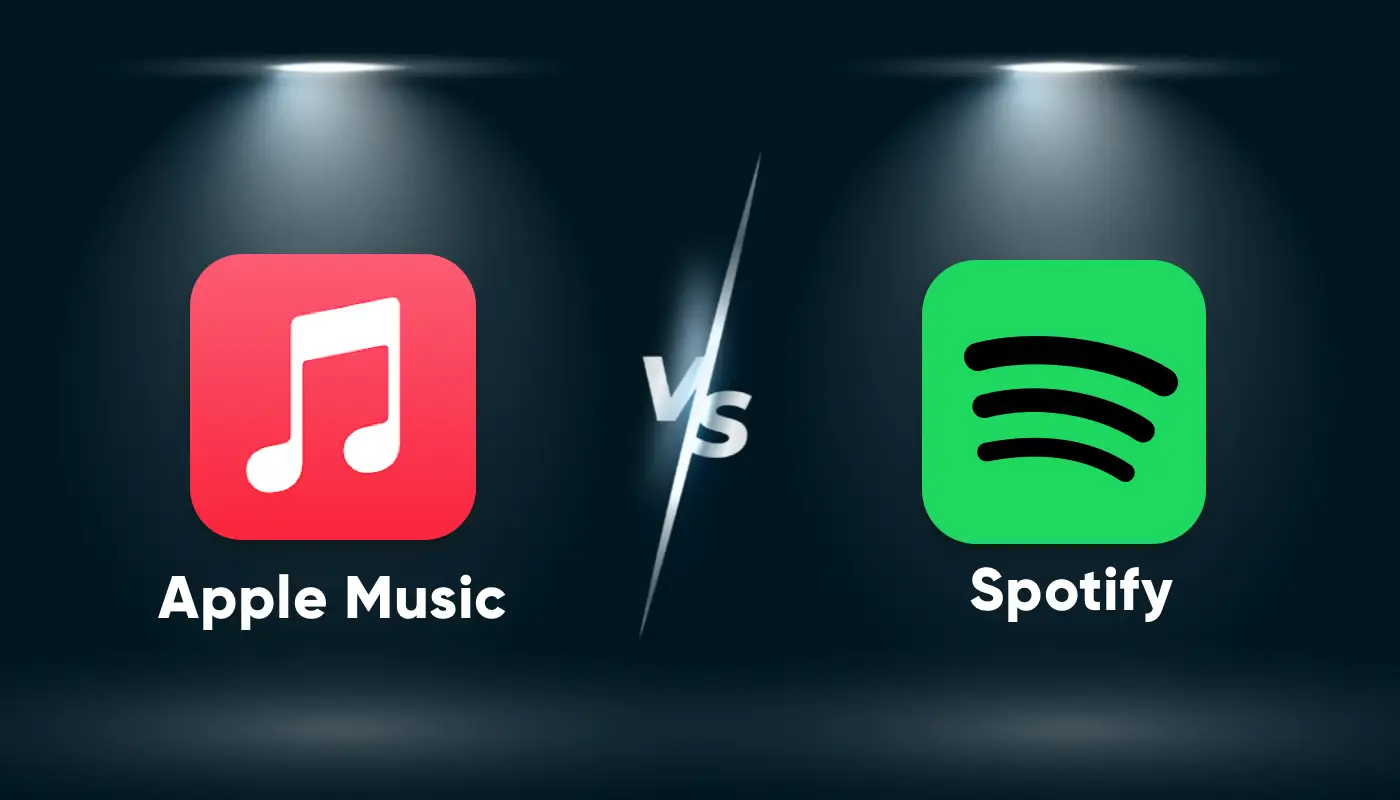From the moment the alarm clock rings in the morning until we fall asleep with headphones on late at night, music has quietly become an integral part of our lives.
When it comes to choosing a streaming music platform, have you ever been torn between Spotify and Apple Music? Spotify boasts precise algorithms that accurately gauge our preferences; Apple Music emphasizes unparalleled audio quality. Which platform is better suited for you?
Don’t worry. In this article, I will compare Spotify and Apple Music based on my personal experience, evaluating them across nine key aspects: price, music content, audio quality, interface design, device compatibility, and personalized features.
This comprehensive analysis will help you save time and find the platform that best fits your needs.
Apple Music and Spotify are the two most popular streaming music platforms in the world:
Apple Music is best for users who want to learn about the stories behind each song and follow their favorite artists. It offers more behind-the-scenes content, album explanations, interactive radio shows, and other entertainment activities.
Spotify, on the other hand, is better suited for users who enjoy using music for socializing and exploring various audio entertainment options. In addition to music, it offers a wide range of podcasts and audiobooks.
Apple Music vs Spotify: Which Is the Better Deal?
When choosing between Apple Music and Spotify, price is often the first consideration.
When it comes to pricing, there’s not much difference between Apple Music and Spotify — both offer a 1-month free trial and come with three main plans: Individual, Family, and Student (see the table for specific price comparisons or check the Spotify price in 2025 for the latest regional rates ).
Plans | Apple Music | Spotify | GamsGo |
Individual | $10.99 / mo | $11.99 / mo | $4.33 / mo |
Family (6) | $16.99 / mo | $19.99 / mo | ❌️ |
Student | $5.99 / mo | $5.99 / mo | ❌️ |
Duo (2) | ❌️ | $16.99 / mo | ❌️ |
Free | ❌️ | $0 | ❌️ |
Recharge (Top-Up) | ❌️ | ❌️ | $4.57/mo |
Average Saving vs. Official | ❌️ | ❌️ | ≈ 60% OFF |
That said, the biggest distinction is that Spotify also offers a completely free version. If you don’t mind ads and are fine with shuffle play, Spotify’s free tier is still a solid option.
But suppose you want the full Premium experience — ad-free listening, offline downloads, and unlimited skips — without paying the full official price. In that case, there's a smarter way: get a Spotify Premium account through GamsGo.

Apple Music vs Spotify: Audio Library
Apple Music and Spotify both claim to have over 100 million songs in their catalogs, which seems similar at first glance. But when you actually use them, you'll find that what they offer you is completely different.
Apple Music isn't just about playing songs; it's more like giving you a chance to delve into the inner world of your idols, offering a comprehensive understanding of the stories behind each song.
For example, when you play Taylor Swift's “Everything Has Changed,” you not only hear the song but also hear her personally explain the inspiration and creation process behind it, along with behind-the-scenes footage and studio clips.
Spotify, on the other hand, is more like a versatile audio companion that accompanies you in your daily life. In addition to a vast music library, it offers over 4.5 million podcasts and over 250,000 audiobooks.
You may find that there is no absolute superiority between these two platforms in terms of music content; it all boils down to your preferred listening style.
Apple Music vs. Spotify: User interface
In terms of app interface design, Spotify and Apple Music take two different approaches. One leans toward a “quiet aesthetic,” while the other focuses on “rich content exploration.” Which one you prefer depends on which one feels more intuitive to you.
Apple Music: Design Aesthetics
From the moment you open the Apple Music app, the white background, simple module layout, and clear functional tab bar at the bottom of the interface allow you to know exactly what to click next without having to think about it.
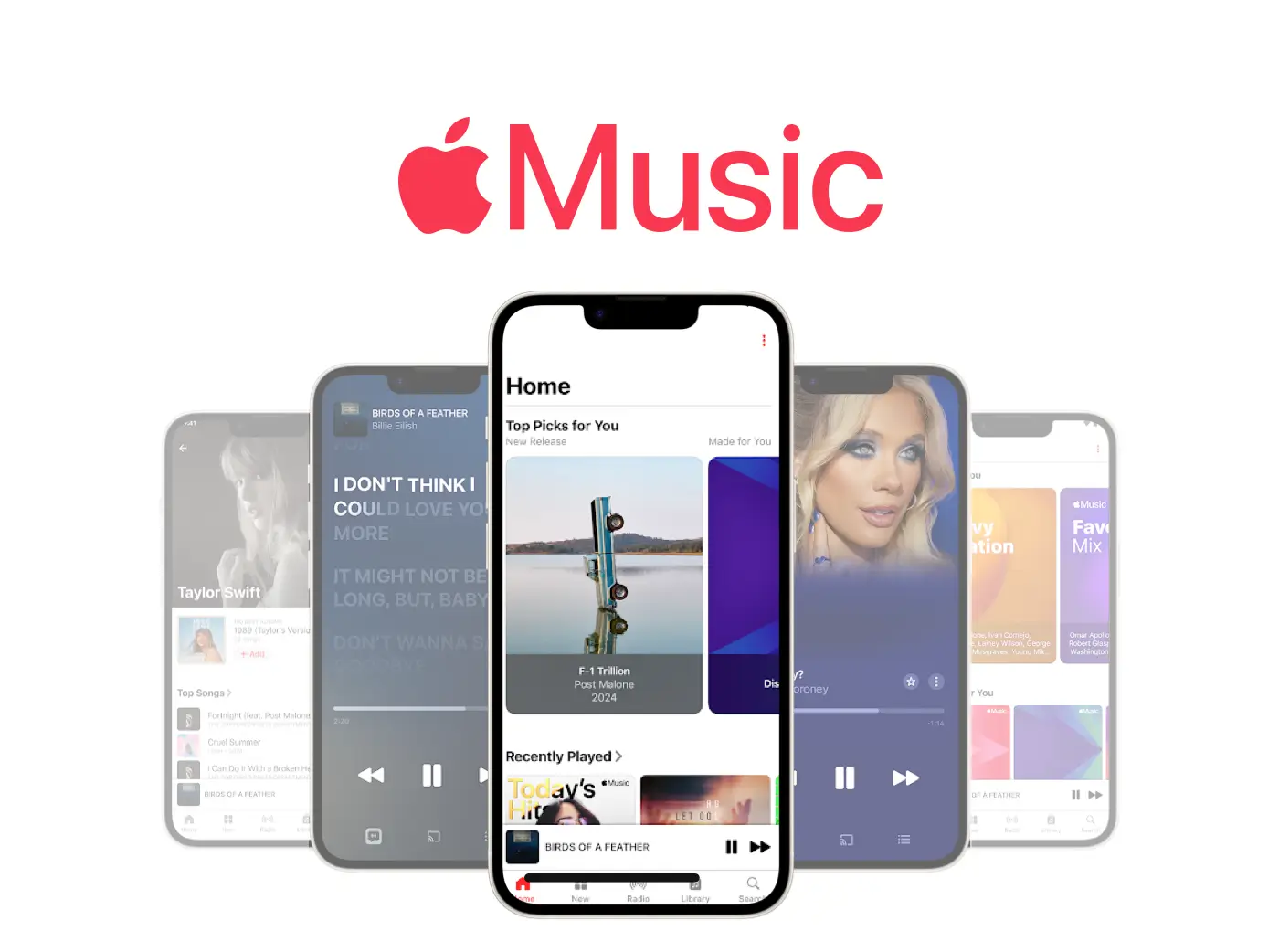
When you enter the playback interface, the interface is even simpler and aesthetically pleasing. The background is a gradient color that expands from the album cover, immersing the entire screen in a single background color.
When you enter the lyrics interface, even the space is hidden, and there is no other redundant information, allowing you to focus on the music itself.
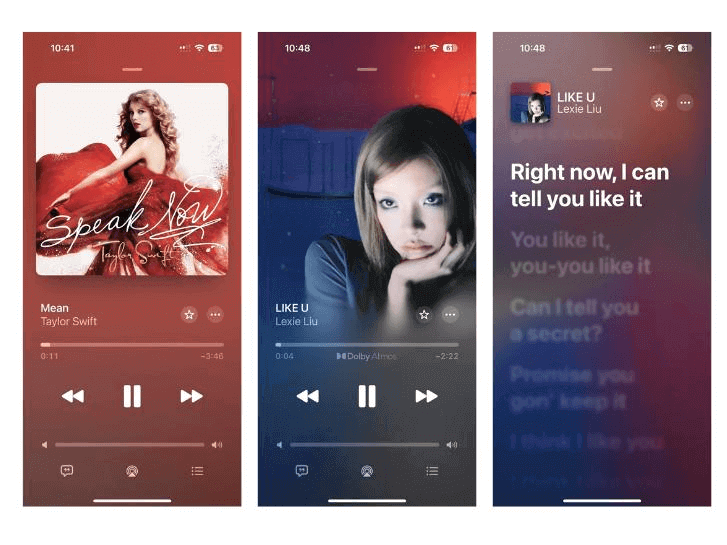
Spotify: Rich Content Recommendations
Spotify has a completely different style. When you open the home page, you may be instantly overwhelmed by a bunch of album covers, playlists, and podcast recommendations.
Its user interface is somewhat similar to Netflix, with each row on the home page representing a themed playlist or personalized recommendation, and each module can be swiped horizontally.
Many people love it because even if I don't know what to listen to today, I can simply click on one of Spotify's recommended playlists and start listening.
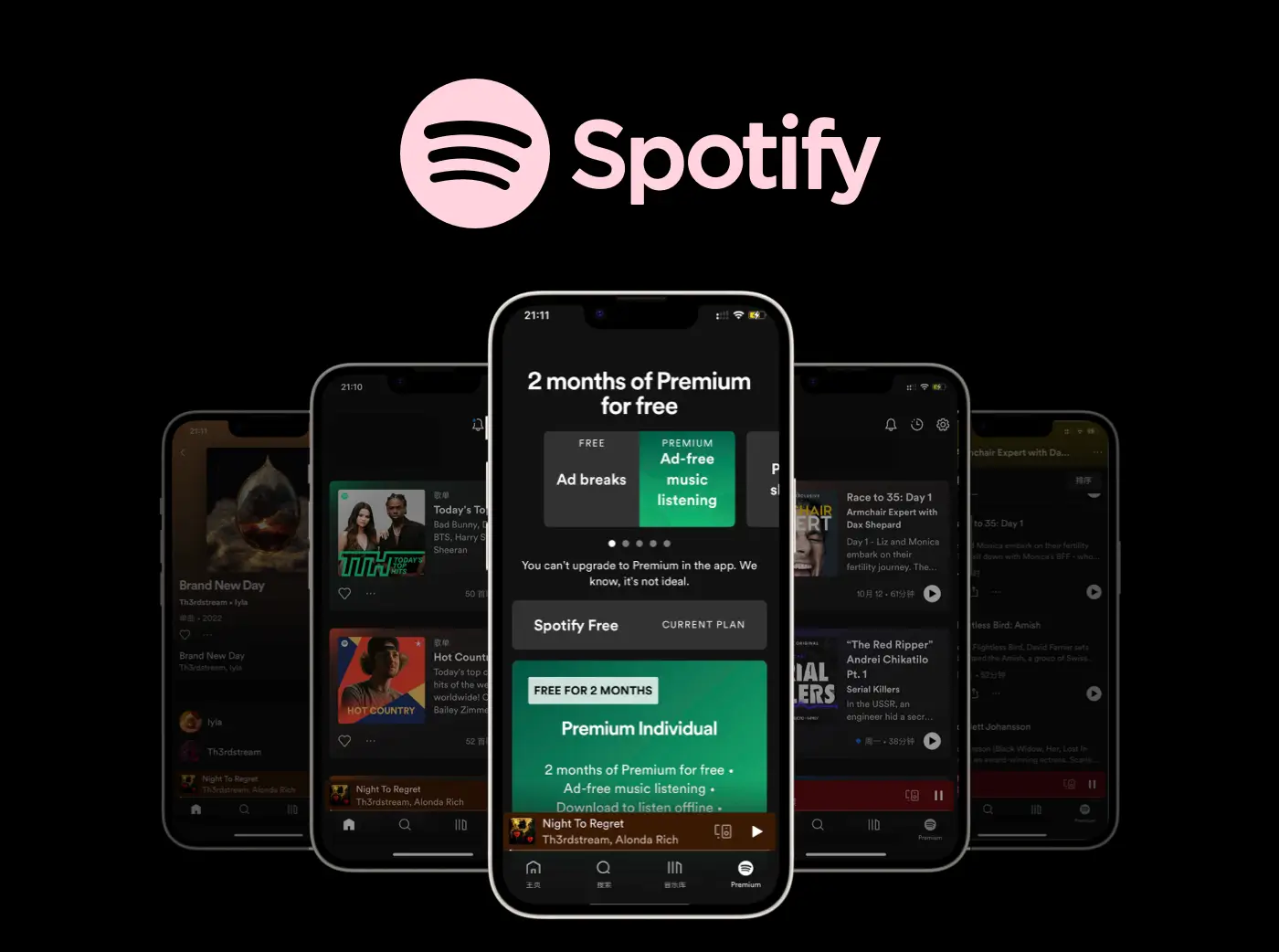
On the playback page, Spotify displays three main areas: the album cover, controls, and lyrics. Unlike Apple Music, the lyrics do not take up the entire screen, but they offer a wealth of features, such as the ability to switch playback devices in real time (Spotify Connect), set a sleep timer, and adjust the equalizer.
For some users, the high information density on the home page may feel visually overwhelming. However, for those who enjoy passively discovering new content, this is precisely what makes Spotify so appealing.
Spotify Offers More Personalized Music Discovery
Spotify’s personalized recommendations are incredibly accurate — it’s almost like the app can read your mind. It constantly suggests songs you’ve never heard before but perfectly match your taste.
For example, since I often listen to Taylor Swift, Spotify recommends “Taylor Swift Radio,” which not only features her songs but also music from artists with a similar style.
Compared to Spotify, Apple Music’s recommendation logic is a bit more conservative, and you often find yourself wondering, “Why does it keep recommending the same songs?”
Moreover, Spotify continues to refine its personalized exploration features. In 2024, it launched a new AI-powered music discovery feature. You simply input the type of music you want to listen to, such as “my favorite type of Korean K-POP songs,” and Spotify's AI will generate a completely personalized playlist based on your preferences.
As of April 2025, this feature is available in 52 countries, including the US, UK, and Singapore.
Apple Music Offers Better Streaming Sound Quality
If you're the type of person who cares about the layering of vocals in music and the crispness of drum beats, then Apple Music is your “soulmate” for listening to music.
For most users, Spotify's highest audio quality is 320kbps, which is already clear and pleasant to the ear. However, it is essentially lossy compression, meaning that some musical details, such as drum beats and piano sounds, are still omitted.
Apple Music, on the other hand, offers lossless audio, Dolby Atmos, and spatial audio, allowing you to experience music not just with your ears, but with a sense of immersion, as if the music is all around you.
For example, when listening to Adele's “Easy On Me,” the listening experience on Spotify feels like hearing a performance through a glass wall. In contrast, Apple Music's Dolby Atmos feels like you're sitting in a concert hall enjoying Adele's live performance.
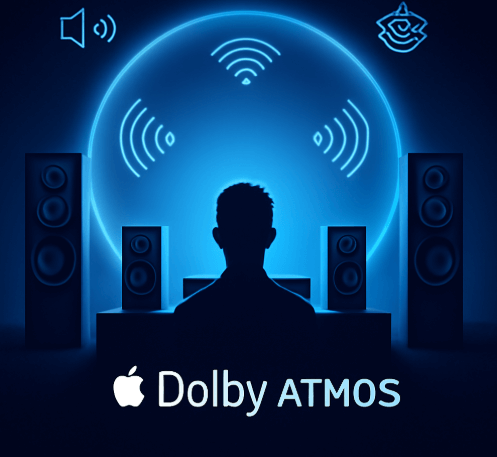
It is important to note that not all songs support Dolby Atmos, and you must use an Apple device with wired headphones to truly experience that immersive feeling of being “surrounded by music.”
Spotify is one of the most widely compatible streaming music platforms available today. Whether you're using an iPhone, Android phone, Windows PC, Mac, smart speaker, smart TV, gaming console, car audio system, or even a smartwatch, as long as it's connected to the internet, Spotify can support playback.
Additionally, devices can be connected via Spotify Connect, allowing you to seamlessly switch music playback from one device to another. For example, if you're listening to music on your phone during your commute, you can simply tap a button to seamlessly switch the music to your living room speakers when you get home.
Apple Music also supports multi-platform use, but its best user experience is within the Apple ecosystem. For example, Apple Music also supports multi-device connectivity, but this is only possible on Apple products such as iPhones, Macs, HomePods, or Apple Watches.
Therefore, if you regularly use multiple systems and devices, Spotify's compatibility advantage makes it more practical and convenient.
Although music software doesn't encounter the same minor issues as shopping, such as inquiries about products or payments, we inevitably encounter problems during normal use, such as subscription failures, failed family member additions, account lockouts, and the inability to find offline songs.
At this point, Apple Music's 24/7 live customer service becomes particularly convenient. Whether it's day or night, simply log in to the official website or open the “Support” app on your iPhone, and someone will respond quickly.
Spotify's customer service system, on the other hand, is more self-service oriented. Most of the time, you'll need to find answers or post questions in the help center or community forum. Human customer service only gets involved when the issue is more serious (such as payment problems, inability to log in to your account, or account suspension).
Spotify Has a Better Social Experience
In Europe and the US, listening to music is not just a personal hobby, but also a way to socialize. Have you ever tried editing a playlist with your friends at a party? Or recommending great songs to each other in a chat group? If so, you'll love Spotify's social features.
Spotify's collaborative playlist feature allows users to create and edit playlists with friends, and anyone can add or remove songs. There is also a Group Session feature that allows five friends to listen to music together, even if they are in different cities, and everyone can control the music together.
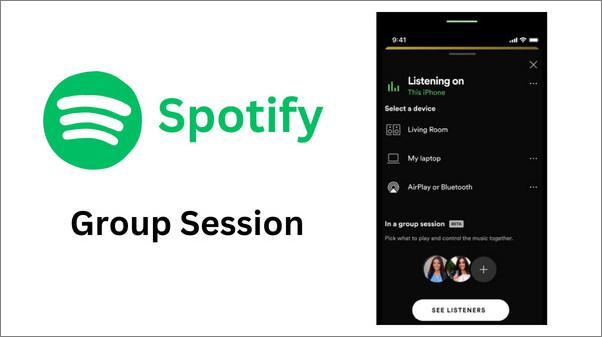
If you want to share a newly discovered song with your friends, all you need to do is click on Spotify to send the music directly to Instagram Story, Facebook, Snapchat, Discord, and even your blog. Your friends don't even need to jump to Spotify; they can click to play directly on other social media platforms.
Apple Music also allows you to share links, but it's more basic. You send a link, and your friends need to use Apple Music to listen to it.
On Spotify, music becomes a social activity. Whether it's sharing playlists, listening to music with friends, or discussing music and culture through podcasts, Spotify's social features provide users with a more interactive platform, making the music-listening experience more diverse and enjoyable.
In addition to listening to music, Apple Music and Spotify also have some additional hidden features.
Apple Music
- Apple Music Sing feature. It lets you turn your home into a karaoke bar in seconds. It can reduce or eliminate vocals from songs, allowing you to sing along to the accompaniment. This feature is especially useful on the latest Apple TV, letting you host a real karaoke party at home.
- Apple Music Replay provides annual hit songs, allowing you to revisit past playlists and relive the music of years gone by.
- Desktop mini-player. You can view what's playing without opening the entire app, and control playback and skip tracks, so you can stay focused without missing out on great music.
Spotify
- Spotify Wrapped compiles an annual listening report based on your listening history at the end of each year. It includes your most-played songs and favorite artists. It also compares your listening habits with global data. It's expected that Spotify Wrapped 2025 will likely be released around December 3rd.
- AI DJ & Smart Playlist Tags. Spotify's new AI DJ can chat with you in a casual tone: “Hey, how about some 80s hits with a strong beat?”. This provides an immersive experience.
- Embed in blogs/websites. This is a treasure trove of features for content creators. If you have your own blog or music-sharing website, Spotify provides direct embed codes, allowing you to integrate entire albums or playlists into your web pages, combining aesthetics with practicality.
After this round of testing, I found that Apple Music is more suitable for those who enjoy immersive listening and prioritize sound quality; Spotify, on the other hand, is better suited for those who enjoy discovering new music, sharing playlists, and listening to various audiobooks and podcasts.
In terms of pricing, Spotify Premium is the better choice. Not only can you use it for free, but you can also upgrade your Spotify account through subscription-sharing platforms like GamsGo at a price 65% lower than the official rate.
Therefore, if you're not a die-hard Apple fan and prioritize personalized recommendations and social interaction while wanting to enjoy full functionality at a lower cost, give Spotify a try—I'm sure you'll love it.
FAQ:
Why do people use Spotify instead of Apple Music?
Spotify's recommendations are more accurate and its social features are stronger, allowing playlist sharing and real-time listening updates. Apple Music's recommendations are simpler, and many social platforms restrict sharing or forwarding.
Can you hear the difference between Apple Music and Spotify?
Yes. Apple Music is superior to Spotify in terms of sound quality and resolution. Apple Music provides lossless audio and supports Dolby Atmos and Spatial Audio. From a personal experience perspective, the sound quality of Apple Music makes people feel immersed.
What can Apple Music do that Spotify can't?
Apple Music offers sound quality not available on Spotify and seamless transitions between ecosystems that only Apple can. In addition, Apple Music offers exclusive content not available on Spotify, such as artist reviews, behind-the-scenes footage, and early releases.
Related Articles:

